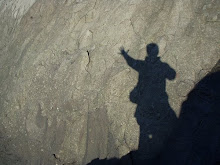Children please grow up! Seeking sanity in the Car vs Bike debate
"Children, please grow up!"
Thats my thought every time I read some silly rant from either side of the Car vs Bike debate. Scott Latimer, writing in The Globe and Mail, offers no helpful solutions but he sure has a great headline: Im afraid of cyclists.
Latimer is at pains to say he isnt against bicycling but.... he describes cyclists in terms that are far from reasonable:
"I watch them weave and dart through the city, betwixt and between moving cars, parked cars, pedestrians and myriad other obstacles on or near the roads."
"There is no space as it is, let alone for bicyclists who seem to move randomly amongst the chaos, without care for traffic lanes or traffic laws."
The same quite honestly can be said of many automobile drivers. In full auto-entitlement fury, Latimer suggests that letting bikes share the same road space as cars is unfair to the gas guzzlers:
"Bicyclists have the right to bike safely and properly, but motorists also have the right to drive without constantly worrying about when a cyclist might suddenly appear, speeding along without (shudder) a helmet."
Latimer admits he doesnt know what the answers are, only that "our current transportation model is broken."
The answers however are out there.
1) Latimer complains there are no rooms for bikes because:
The reality is that, in 2010, our roads are bursting at the seams.
Yep. And you my friend are part of that problem. It aint the transportation model thats broken. Its the mindset of people who live in 416 and think its okay to commute to 905, as Latimer does. David Suzuki has this advice for you:
If you are moving, choose a home within a 30-minute bike, walk or transit ride from your daily destinations. A convenient place to live reduces the amount you drive, which means you'll lower your greenhouse gas emissions and other pollutants.
And you'll also make room on the road. For all of us.
2) Latimer suggests we'd all be safer with big beautiful bike lanes. It seems he believes more infrastructure is the answer:
"I would be for bicycling in dedicated bike lanes, or bicycling in any context that is safe and accessible and doesn’t force cyclists to imperil themselves riding in heavy traffic."
"Safe driving involves knowing the patterns on the road – having an expectation of what other drivers will do at a particular time and in a particular scenario. But with cyclists, there appears to be no clear pattern to their movements and no obvious location to expect to find them when you’re driving."
Sorry. The answer is much simpler. Infrastructure just lulls drivers into a false sense of security: "Ah, I can drive fast here, cause there is a nice white line painted on the road to protect me."
Turns out, less infrastructure and more ambiguity makes drivers slow down and <gasp> look around them, and even interact with pedestrians and cyclists.
This isnt a new idea. Tom McNichol wrote about in WIRED back in 2004. For his article he visited a traffic circle (roundabout) with Dutch traffic engineer Hans Monderman.
It's the confluence of two busy two-lane roads that handle 20,000 cars a day, plus thousands of bicyclists and pedestrians. Several years ago, Monderman ripped out all the traditional instruments used by traffic engineers to influence driver behavior - traffic lights, road markings, and some pedestrian crossings - and in their place created a roundabout, or traffic circle. The circle is remarkable for what it doesn't contain: signs or signals telling drivers how fast to go, who has the right-of-way, or how to behave. There are no lane markers or curbs separating street and sidewalk, so it's unclear exactly where the car zone ends and the pedestrian zone begins. To an approaching driver, the intersection is utterly ambiguous - and that's the point.
Monderman and I stand in silence by the side of the road a few minutes, watching the stream of motorists, cyclists, and pedestrians make their way through the circle, a giant concrete mixing bowl of transport. Somehow it all works. The drivers slow to gauge the intentions of crossing bicyclists and walkers. Negotiations over right-of-way are made through fleeting eye contact. Remarkably, traffic moves smoothly around the circle with hardly a brake screeching, horn honking, or obscene gesture. "I love it!" Monderman says at last. "Pedestrians and cyclists used to avoid this place, but now, as you see, the cars look out for the cyclists, the cyclists look out for the pedestrians, and everyone looks out for each other. You can't expect traffic signs and street markings to encourage that sort of behavior. You have to build it into the design of the road."
Maybe we're not ready for all of Monderman's ideas in Canada just yet. (At the end of the WIRED article, McNichol watches as Monderman walks backwards into the traffic circle to test his theory.) But the underlying principles can go a long way to bringing sanity back to the streets.
People need to calm down, slow down and look each other in the eye.
I (who ride the bus) am tired of the endless squabbling between cyclists and drivers. Id like to spank both groups and send them to their rooms. But perhaps a better answer is for everyone to try and act a little more grown up.
We all get scared once in a while Scotty. But part of growing up is learning to deal with our fears. When you really face your fears, really look at them, you often discover things arent as bad as they seem. It's going to be okay buddy.


0 Comments:
Post a Comment
<< Home